Burgundy is the land of plenty and to some degree also diversity. I normally try to find new and upcoming young producers, the future stars of Burgundy and focus on the recent vintages from the best estates.
This story is however quite different – but nevertheless worth some thought as it focusses on a completely different story about a unique estate that for almost 20 years ago decided to do things – I dare say – in a completely different fashion.
The estate was founded around 2000 – and became known for what one could call natural wines, wines made from unknown terroirs outside the the core of the prominent appellations, and furthermore an estate that after only a few years produced some very rare and expensive wines labeled as Bourgogne Grande Ordinaire – wines that became listed in some of the most famous restaurants in the world – including the acclaimed Noma in Copenhagen.
The estate is of cause Domaine van Berg … or should I say was …
Visiting Judith and Bernard van Berg
In November 2017 I had the possibility to visit Domaine van Berg, on the initiative of the Danish importer Lasse Kruse Rasmussen – who is one of the great supporters and fans of Domaine van Berg.
Lasse wanted me to meet Judith and Bernard van Berg, to see the estate, and meet the people before it was too late as the estate is now in a process of being sold.
It’s sort of a sad moment to visit the estate when the founders are leaving – but not in this case as both Bernard and his vife Judith seems very resolved and at peace with the desicion to move on and sell the estate.
It has in many ways – as Judith van Berg puts it – been an adventure or even a fairy tale, that began with a few vineyards acquired in 2001 and began to produce their unique wines for a period of almost 15 years – until it was at least put on hold in 2017 when the estate was sold and passed on to new owners.
Perhaps the future has new chapters in store for the collectors of these special wines – only the new owners and the years to come will reveal this.
The love for Burgundy – wines with a vision
Bernard van Berg originates from Netherlands have a very strong love and passion for Burgundian wine and the Burgundy region – after tasting and collecting some of the best burgundies through the years – and knowing prominent Burgundian winemakers like Aubert de Villaine of Domaine de la Romanée-Conti.
Bernard is different from most people who love for Burgundian wine – he eventually got the idea that he could create an estate and make his own Burgundies – that would satisfy his ideas about how a fine Burgundy wine ideally should taste.
Normally the story would end there .. but Bernard actually decided to move to Burgundy with his charming and kind wife Judith – to start a production of wine in the outskirts of the Meursault appellation.
He was at this point in his early 50s and making a living as international photographer travelling the world taking photos – and selling these from his large catalogue of photos build over the years. This was the financial background for the Burgundy adventure and the running of the estate over the years.
Both Judith and Bernhard seems to be very caring and ecologically minded people – not as a fashion statement – but they really do care about the nature, the preservation of the wildlife, the nature and the ecological system in general.
Organic certification and even biodynamic certification was at the time just starting to be rooted in the Burgundian culture of some of the larger estates, but the mindset and approach of van Berg is more than just organic or biodynamic – as its making wine in the nature or in pact with nature, rather than “just” respecting nature avoiding the use of chemicals and respecting the cycles of the moon and the plants. The van Berg approach is taking it further …
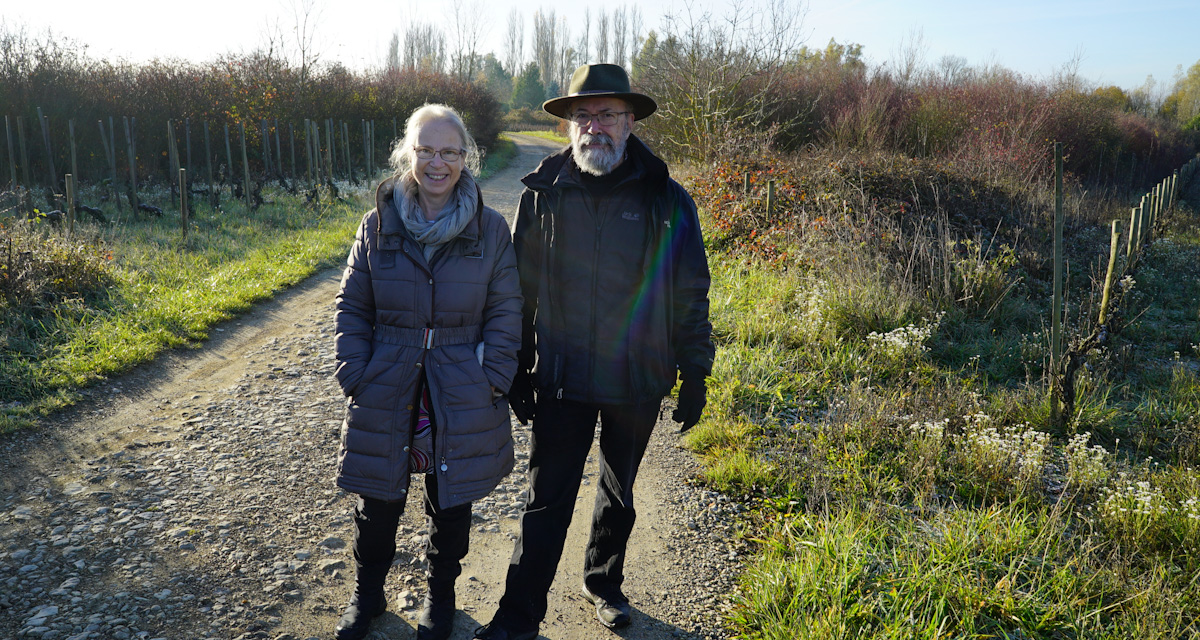
Photo Bernard and Judith in the vineyards
Bernard van Berg actually set out the make wines in vineyards that have areas of natural vegetation in between the areas of vines – hence making vineyards with a mix of rows of wine and nature with wildlife, trees and shrubbery creating a quite unique ecosystem.
The harmony with the nature is, it seems, deeply rooted in Judith and Bernards mindset, as is the desire to do things their way. Bernard have a strong belief in his own ideas and a perfectionistic desire to reach his goal – his way and in pact with nature.
As Judith explained, Bernard decided to do it his way – and he did – most likely to the disbelief of the neighbouring vignerons .. as they were most likely thinking – how on earth will he earn money with this approach – and doing all this manual work producing so little wine from modest terroirs.
Well received by the Burgundian neighbours
While Burgundy is a region of strong traditions, it’s also a region of friendly people – and as Judith and Bernard explains, they were very well received in Meursault when they settled in a lovely house in the center of Meursault, and began to look for vineyards for the wine production.
The neighbours were friendly, and the vignerons helpful when Bernard began to work in the vineyards he gradually acquired on the other side of D974 – an area not very prominent seen in the eyes of the local growers. But an area that at least partly was a more significant part of the Meursault appellation before the revolution and in the years after.
The first cadastre maps made for the Meursault appellation in 1825 show a lot of small plot below the road leading to Beaune. These plots were then a part of Meursault and it’s fair to assume that wine was produced there even after the revolution – amongst others in the area called Busigny – the name of one of the van Berg terroirs.
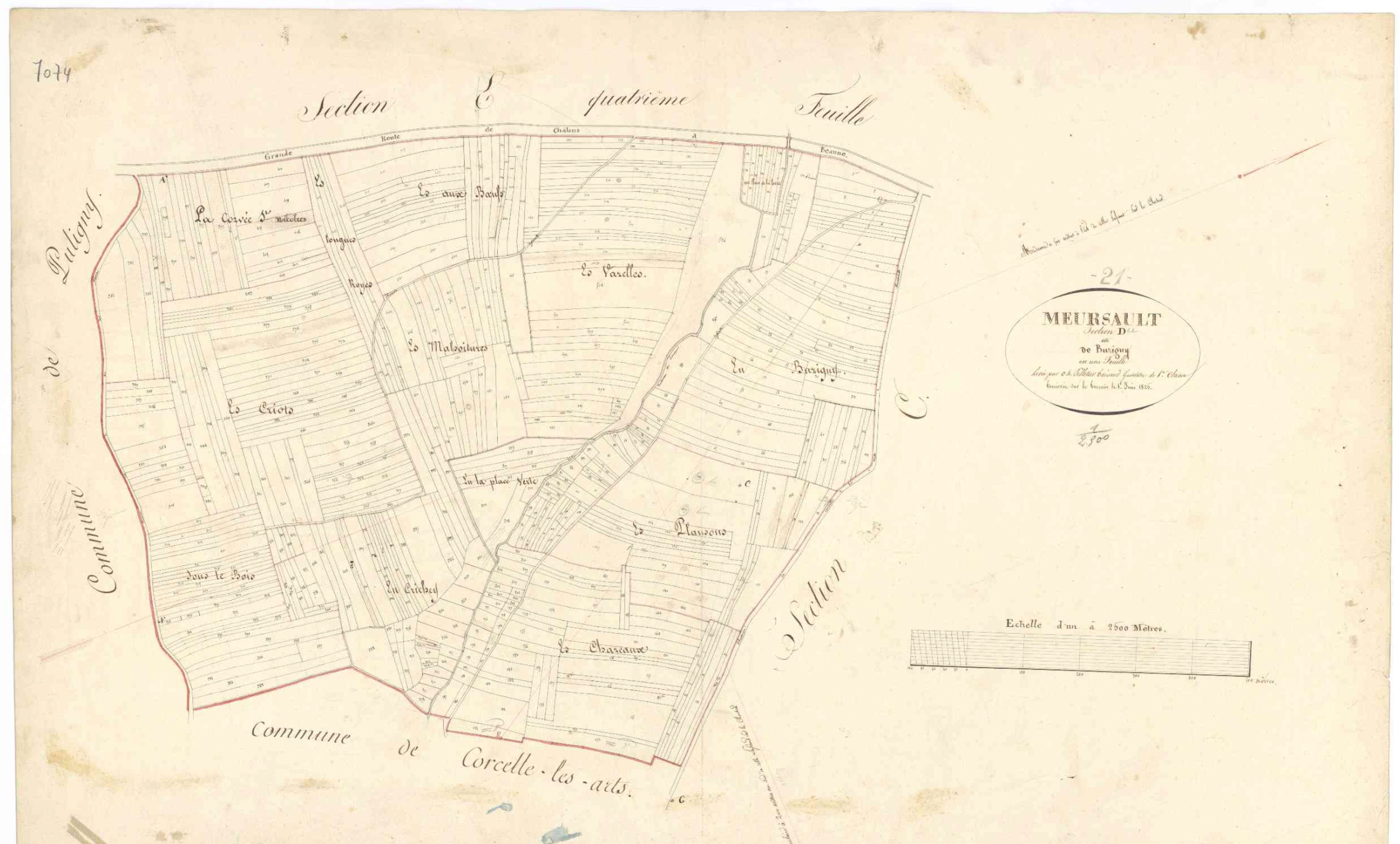
The Busigny section of Meursault 1826
So in fact there was a tradition to make wine from these terroirs, although no one is claiming Grand Cru or 1er cru status for these vineyards.
But Bernards studies showed that these vineyards once were regarded as a part of the appellation, and therefore also vineyards with a certain potential terroirs wise.
This is where some of the controversy began, as choosing these vineyards by some was seen as a disregard of the importance of terroir – and that Bernard was thinking that he could make “Grand Cru” quality from these modest terroirs.
The idea was however to prove that old terroirs in the outskirts of the current classification could make some tremendous wines given the proper attention and care.
Hence proving that there is in fact a fine potential in many lesser terroirs, and not only in the hyped and highly acclaimed Grand Crus.
Seeing the increasing prices of vineyards this idea or hypothesis is both very interesting and promising for young vignerons without large and prominent vineyard holdings in the family.
Seeing young vignerons like Nicolas Faure making great wines from plots – at best in the outskirts of the big appellations – confirm the idea of Bernard van Berg now almost 20 Years after he began his project – and his endeavours should be an inspiration to all new vignerons, who can’t afford vineyards or is facing high prices on grapes from known appellations.
It’s a question of dedication and hard work
The vignerons most likely laughed at the plots chosen by van Berg, as they knew that it would be almost impossible to get a good price for wines made outside the main classified areas. Or should I say – they thought the knew.
The thing is that these vignerons often took less care of the vineyards below the road and in other less prominent places, or should I say used to take less care of these vineyards – hence using chemical fertilisers, and spraying with weed killers rather than ploughing with horse or employing organic viticulture.
In fact this strategy often also prevented the production of good wines from these areas – and the classification is in a sense self-reinforcing as the most committed effort is done in the terroirs with a prominent classification whereas the lesser terroirs have a tendency to be neglected.
When Bernard began in 2001 this was very much the case in many areas – and vignerons were harvesting a quality according to the minimal care they took of the vineyards – and the grapes were sold of in bulk to negotiants, that apparently cared even less.
Today this is somwwhat different – now at least some vignerons can sell more wines, and have started to take well care of the vineyards even below the road – and actually some of these have a true expression of terroir, sometimes with elements from the famous vineyards located above the road.
Taking care in pact with nature
Bernard wanted to prove, that he could make a fine wine even from these rather modest terroirs by taking extreme care of the climate, the nature and the ecological system in his vineyards.
Having seen Bernards old cellar books – great Grand Crus of Côte de Nuits, and having tasted great vintages of DRC he obviously knew the importance of terroir. But as with many other tings in life, Bernard also understood that the classification of the terroirs are man made, and a product of politics, time and random events. Looking at the history and old maps he was sure that he could produce wines that lived up to his standards and his personal taste, from plots outside the most prominent and most famous terroirs. Some would have accepted the limitations of the current classification of the vineyards – others like Bernard wanted to prove that even outside the know lieu-dits in Meursault wines of high quality could be made – given the proper care for nature and attention to detail.
And so he did – by respecting nature, hard work and using techniques either long forgotten or invented by himself. The result was very low yields by nature .. and wines free from chemicals of any sort, from vines located in a nature “garden” with rabbits, flowers and other vegetation covering a part of the vineyards.
No wonder the vignerons was sceptical, and most likely spoke about this crazy vigneron, making low yield wines in remote plots below the road – and even sacrificing a part of the vineyard to create small plots of nature to ensure a natural diversity.
As mentioned Bernard van Berg took his own route, often abandoning the traditional methods used by his neighbours. The included the pruning of the vines, where he in some vineyards used the Echalas pruning training of the wines – instead if the more traditional methods like Guyot.
The Echalas pruning and the viticulture without chemicals + a large part of the areas used for forest/shrubbery did reduce the yields from his vineyards sometimes to less than one tenth of the normal production made on the neighbouring plots .
The result was very low yields combined with the relatively small vineyards – which translate into a very modest production of each wine. Most of the van Berg wines are produced in quantities equivalent to one cask – i.e. below 300 bottles – and some wines even in smaller quantities. The two cuvées made in 2016 were very small – only 67 bottles of the white and 31 bottles of the red were produced – as the April frost hit the van Berg vineyards with no mercy.
Yields below 10hl per ha were more or less the rule at Domaine van Berg, and in some cases the yields were as low as below 5 hl per ha – thats low even by Domaine Leroy standards. The average yields of Domaine van Berg was 7.5 hl per ha over the years!!
Low yields normally translates into higher intensity in the wines, and a organic approach in the vineyards does normally give a better acidity and a stronger impression of the terroir.
So the low yields and the natural approach gave wines with a much higher intensity than normally produced from the terroirs below the RN974 – an area where yields well beyond 50 hl per ha is seen in many cases.
Furthermore the attention to detail at Domaine Bernard van Berg is far beyond what is normally seen when producing wines from these plots.
Firstly 100% new oak is used on these wines – and not any kind of oak – exclusive barrels from Tonnellerie Damy (a local producer) – with what seems to be a relatively discretely toasted wood with a very pure and refined impression of wood.
Secondly the wines were very carefully made, a lot of different cuvées were produced, and often only in very limited quantities – hence extreme care was taken during vinification of these micro cuvées.
These were wines made as brain-childs of Bernard van Berg, and clearly not wines randomly made with the fermentaition starting spontaneously almost in the vineyards.
This leads to a second misconception I often have heard mentioned in relation to the van Berg wines – that they are “Vin Nature”! Nothing could in my view be further from the truth, as the wines were made with extreme dedication and attention to detail – with a strong idea about how the wines should turn out.
As van Berg states: “The commitment to the process is expressed by the application of strict rules, with a peaceful manual approach, balanced with the surrounding nature”.
The words strict rules and process is not the words normally used by the “average” producers of Vin Nature!
Bernard van Berg did make some experiments – but in my view most of the wines could not be characterised as Vin Nature – but wines made in pact with nature – and organically certified.
I somehow feel sad to see the magnificent attention to detail exercised by Bernard van Berg reduced to some kind of Vin Nature project with all what this could include of sloppiness.
These wines are crafted with the highest level of attention to detail, and are the brain-childs and ecological babies of Bernard van Berg.
The wines of van Berg
I can’t say that I’m an expert on the van Berg wines, as I only tasted two so far. As I see the wines, they are definitely very carefully made, with attention to detail a clear mind and a clear vision.
They do have there style and expression – and are clearly not wines randomly made – as a coincidence of nature – as some people claim to make so-called Vin-nature.
While the wines comes from plots that are not highly classified, they do come from plots in the outskirts of the appellations, and are wines produced with a very low yields – hence also wines of very fine intensity.
It should be noted that yields below 10 hl are really noticeable – tasting the 2016 vintage made me quite aware of this – as the April frost in some cases caused a significant drop in the yields – even below 10 hl per ha for wines in the worst affected areas.
The low yields at Domaine Bernard van Berg is however normally reached without stress, but via pruning and viticulture. So the vines should produce effortless and balanced wines – if one believe in the benefits of Biodynamic or organic viticulture.
Starting with the red – the
Le Sang rouges de la terre, Le Busigny 2011
a Pinot Noir that comes from the Meursault vineyard Le Busigny located below RN974. This Pinot Noir plots on this vineyard was planted in 1957 – so old wines, with some vines pruned with the Echalas whereas others are pruned in a less labour intensive and higher yielding way. It’s labeled as a Bourgogne Grand Ordinaire – also as a statement regarding the classification system.
It’s an intense wine with good concentration – without feeling dense or robust, offering a aromatically complex fruit, tremendous length and balance for this level. The oak is very refined finely tuned – yet also quite present (100% new oak), giving the wine a characteristic and determined expression. It has a floral mineral feel that I have found in some of the relatively few red Meursaults I have tasted. Elegant, interesting and invigorating. Only 285 bottles of this wine was made.
Next is a white .. younger and needing more time to unfold..
Domaine Bernard van Berg Les Gouttes Blanc 2014 from the vineyard Les Gouttes is also from Meursault, but from the youngest of the van Berg vineyards – Aligote planted in 1985. The vineyard Les Gouttes is located above the RN974 and below Les Charmes and Les Pellans in the southern part of Muersault. This is a very intense and focused with a lovely saline notes – the mighty 2014 vintage have a tremendous natural density and is quite tightly knit. The oak is still quite forward in this wine – hints of hazelnuts and pop-corn. A quite significant wine but will require some time to get the oak integrated fully. A both refined and prominent Aligote in the making. Only 279 bottles made of this wine.
The two wines do confirm my feeling of a very high even perfectionistic attention to detail – ratings or points are in my view irrelevant in this case – but would be in the area Very Good+ or even fine with some ageing – on the winehog scale – a tremendous effort given the terroirs at hand.
The wines have an expensive or exclusive “look, feel and taste” these are certainly far from the bulk wines often made from the areas below the road. One thing is the exquisite oak – another thing is the detailed fruit and the mineral impression – most likely the result of organic viticulture and very low yields.
Price, value, image
The third theme that often is raised in connection with the van Berg wines is the price. I do not know the full price history of Domaine Bernard van Berg, but in recent vintages the prices have been high – and in some cases very high.
Most of the wines are however made in very low quantities – the vineyards are relatively small – yields are very low – so quite understandable that the prices are higher than one would normally see for wines from the same appellations.
I do understand the high prices in this case – but I do think that the high prices somehow have taken the focus away from the content in the bottle … which is sort of sad.
The wines do deserve acclaim and they are in their own league in some ways – and given the amount of effort and dedication going into each bottle.
The flip side of the coin is that the wines in some cases are more known for the price than for the content in the bottle. That being said – this is often the case with very expensive wines from Burgundy – Domaine Leroy being a prominent example.
The end of the fairy tale?
Judith van Berg used the word fairy tale about the Domaine Bernard van Berg wine adventure, and seen from the outside – the sweet and generous Judith is absolutely right.
The van Bergs were ahead of time, and with their respect for the nature and they seem to be frontrunners for wine making in pact with nature. The approach have been more obvious and extreme than thesuccessful biodynamic approach of Domaine Leroy – with the dedication being a common ground.
With Bernard van Berg now reaching 67 – they Burgundy project have reached the end of the journey – and while the latest vintages were troublesome – the 2016 frost was very hard for van Berg – I think the hard and labour intensive vineyard work in the end became to much to continue.
Furthermore my feeling is that Bernard van Berg had proven what he initially wanted to achieve in Meursault – and perhaps even more ….
Aftermath and legacy
I was to be honest a bit sceptical to visit Domaine Bernard van Berg beforehand, but meeting these lovely people somehow restored or invigorated my faith in Burgundy and Burgundian wine.
Sometimes the Grand Cru hype can be too much, and even relatively simple terroirs can given the proper attention and care produce wines with tremendous spirit and energy.
I do wish the van Bergs godspeed on they continued journey – and i’m sure they will be well received where ever they settle down after leaving Meursault. They will be missed in Burgundy.
The legacy of van Berg is his vineyards, and one could hope they will prevail – time will show when the new owners are fully in place.
I do however also think that the spirit live on – the urge to find and explore new terroirs below the road, on the Côte .. by vignerons like Nicolas Faure who are exploring new ground above the village of Nuits-Saint-Georges and making lovely wines below the road in Premeaux.
The viticulture side is still pushed by some – Mme Bize-Leroy has recently changed the hight of the rows in the most prominent Grand Cru vineyards – with higher poles the vines are allowed to grow – and this is also preventing the use of traditional tractors in these plots. The vines are not trimmed – as the top branches are allowed to grow – but weaved down to ensure the sunlight for the neighbouring row. This give smaller berries but more concentrated flavours according to Olivier Lamy, who also use this method in his top vineyards.
The people mentioned are all like Bernard van Berg people that in the search of quality explore the possibilities to develop the viticulture – sometimes using old methods used many decades ago – to enhance quality and flawours.
With the prices of vineyards going up we will see more vineyards being created in the outskirts of the appellations, and the care and attention to detail of existing terroirs will improve – hence challenging the the current understanding of the classification. Top quality can be made in remote vineyards, and provide great drinking – just as Grand Cru vineyards can produce mediocre wines year after year in the hands of the wrong people.
A great vineyard is the chance, potential and opportunity to produce great wines – but with that also comes an obligation – that sadly many seems to ignore by producing indifferent or poor wines with only financial gain at heart.
Thanks for the opportunity ..
Thanks to Judith and Bernard van Berg for taking the time to receive me, and for the tour of the vineyard – and for opening two of these rare and precious bottles – a treat really.
Also thanks to the Danish importer Lasse Kruse Rasmussen for setting this visit up – he clearly was a great part of the van Berg adventure .. and still have the ability to provide the opportunity to taste these wines – as long as he still have some left in the cellar – they are becoming very rare these days.
I have to say that the visit to Bernard and Judith van Berg really touched and surprised me – such dedication, such attention to detail – from vineyards, vines, labels, bottles …. amazing. The wines are unlike any wines I have tasted before – and one understands the idea behind the style and inherent qualities of these wines. They can perhaps not be measured on the normal rating scale – but as a hedonistic experience the do give a lot of both pleasure, elegance and first and foremost a look into the world of Bernard and Judith van Berg – and this is certainly worth a detour from the regular roads of Burgundy even though it will lead you below RN974 into unknown terroirs.

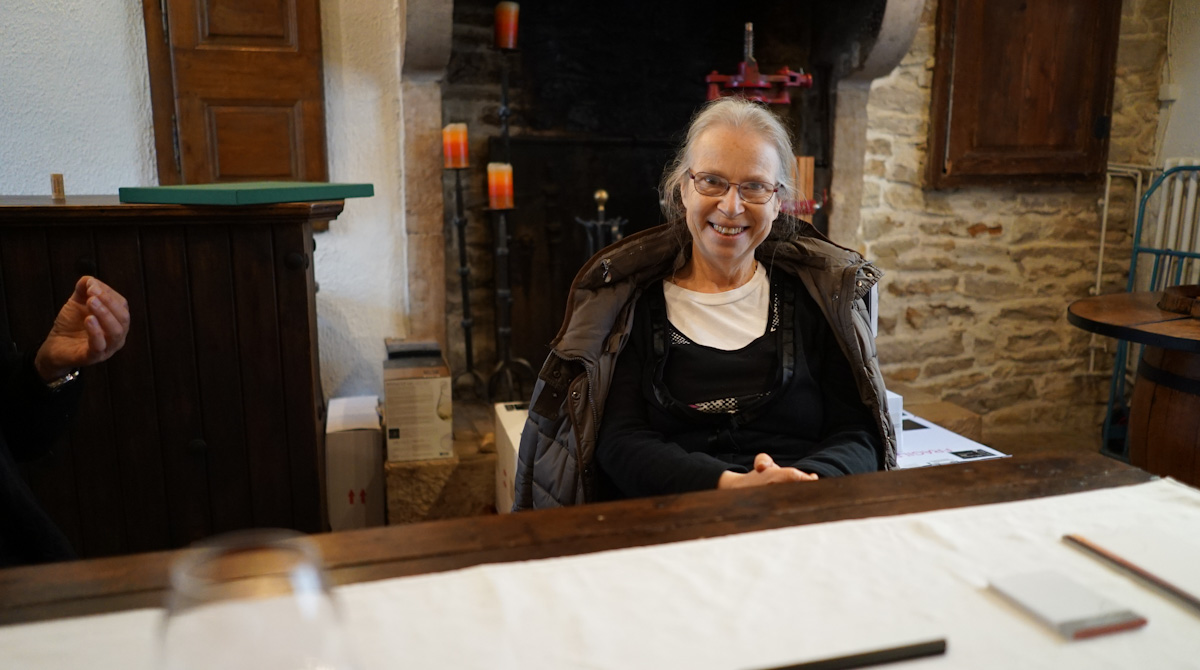
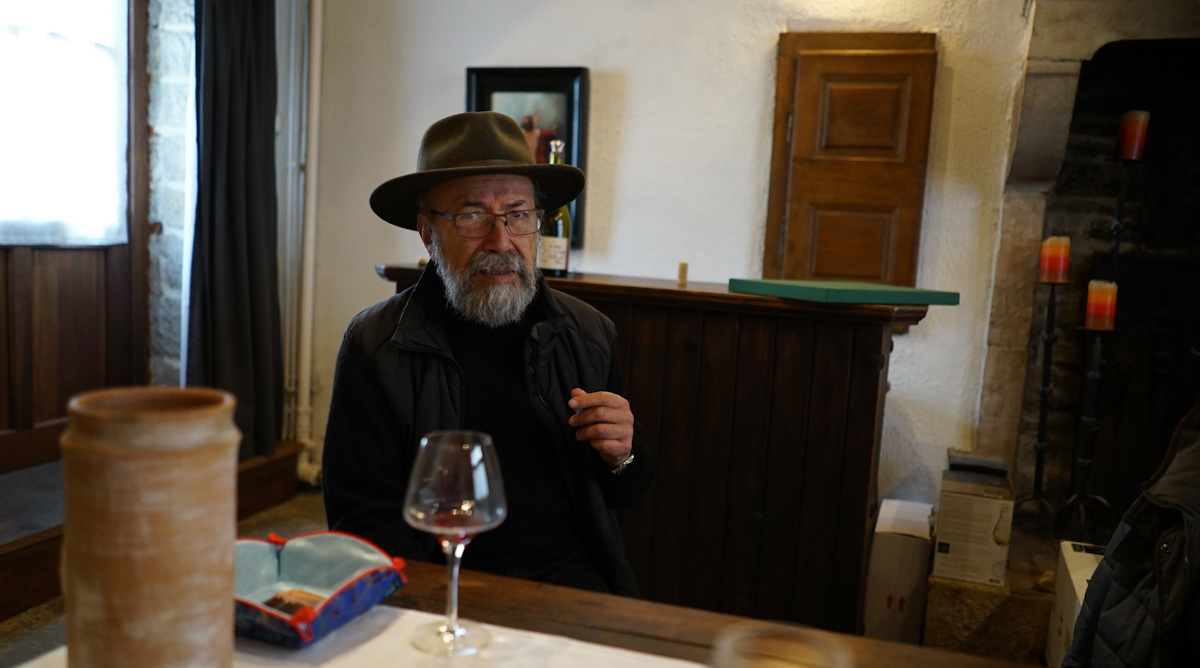
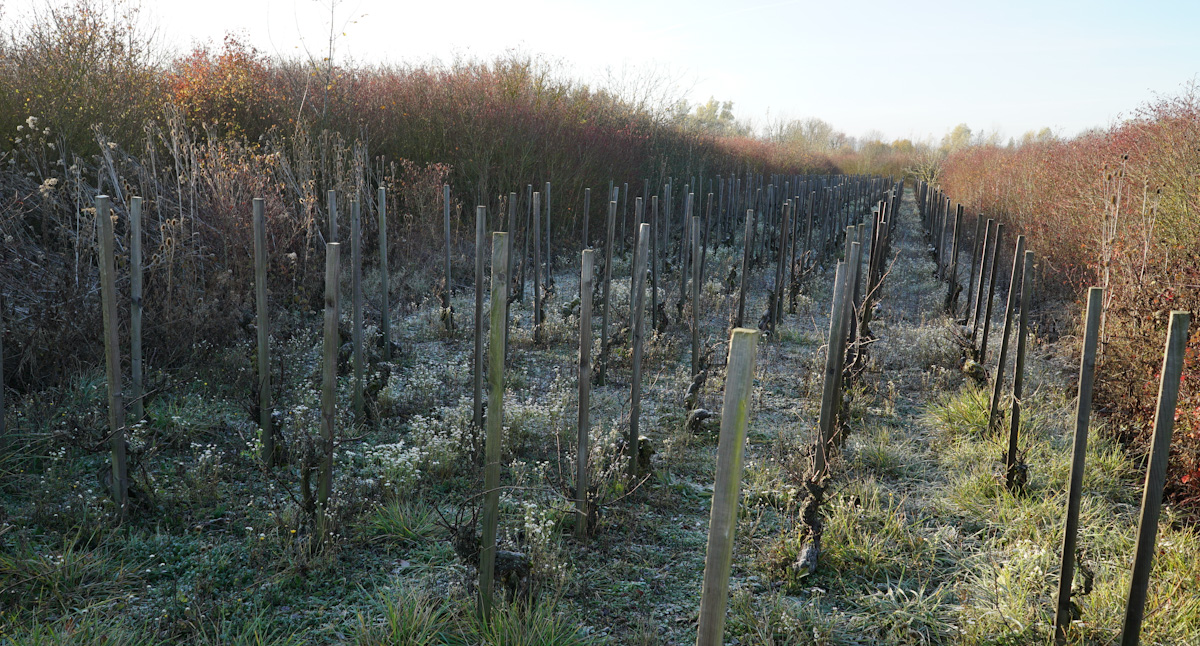
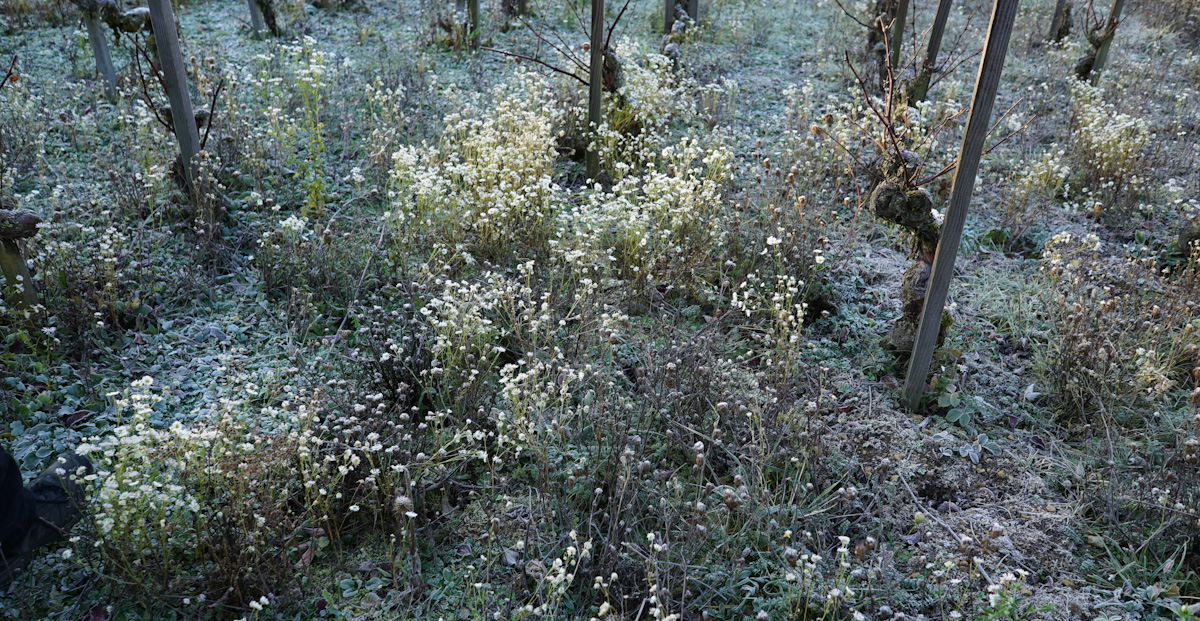
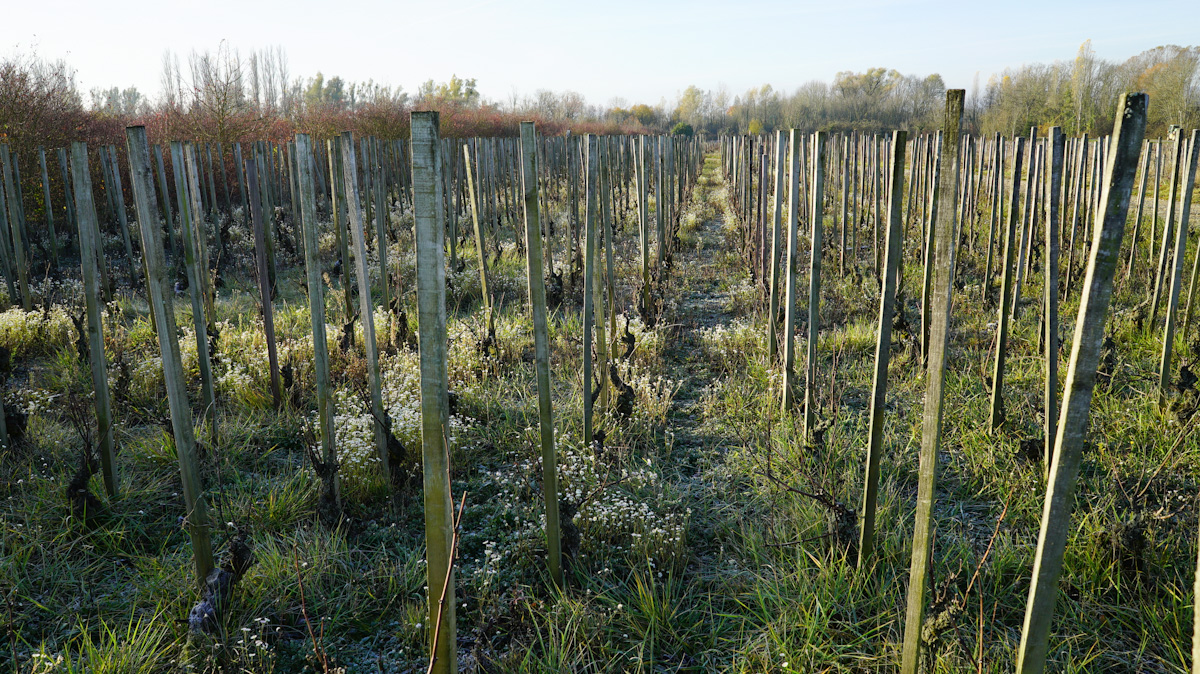
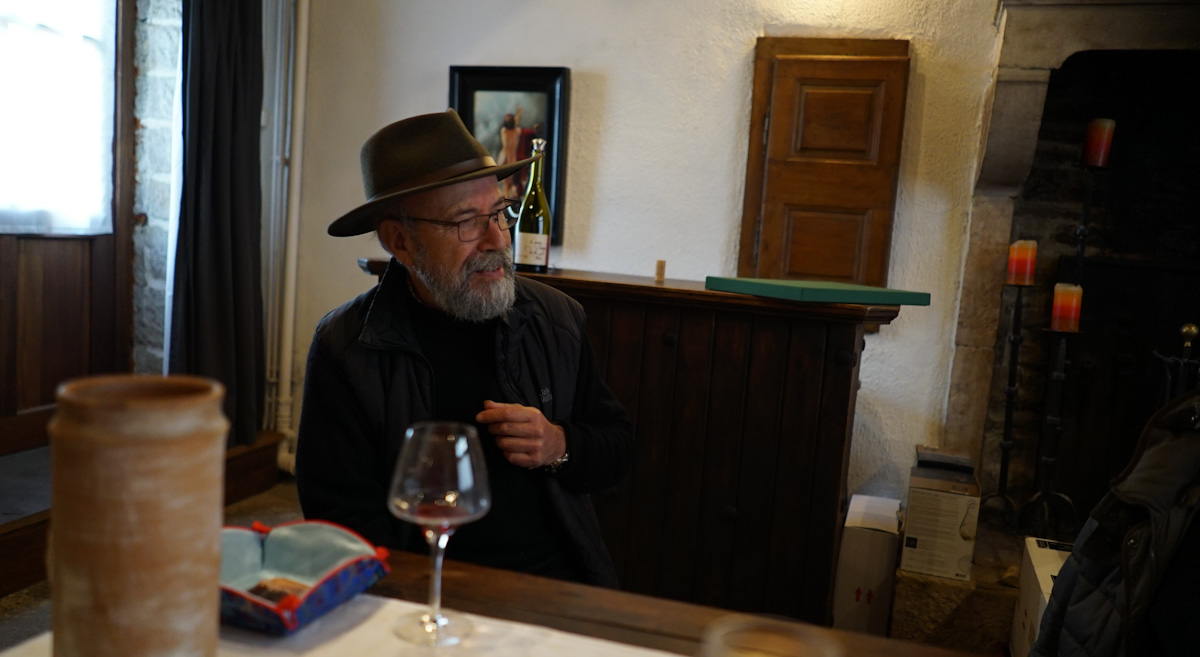
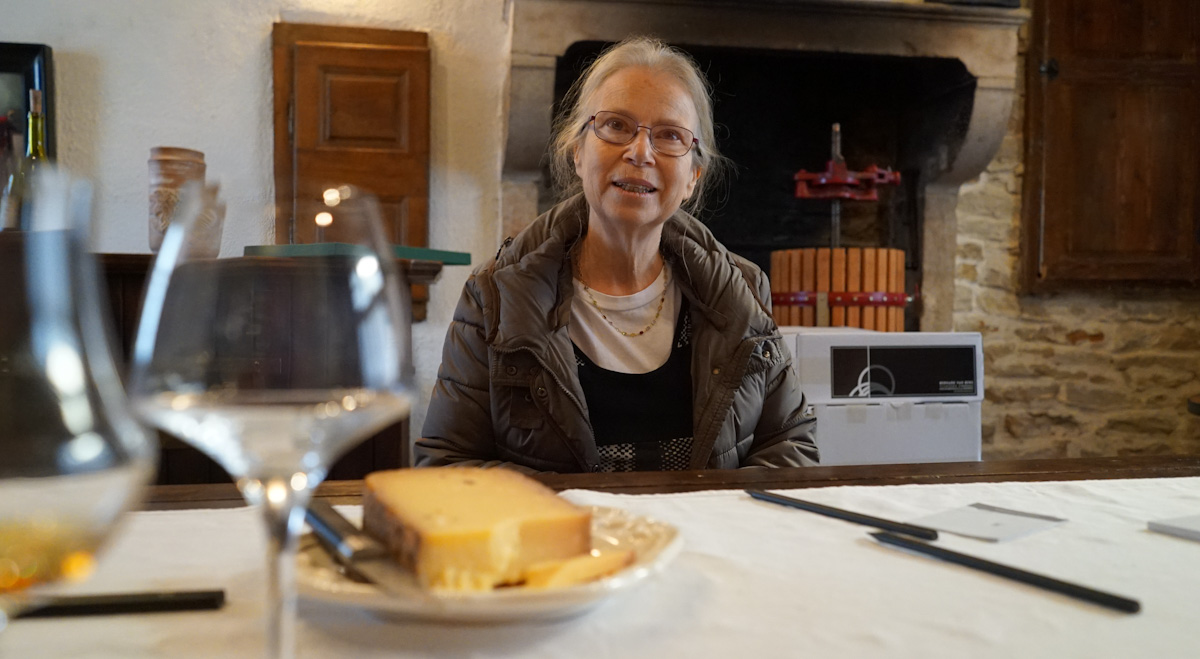
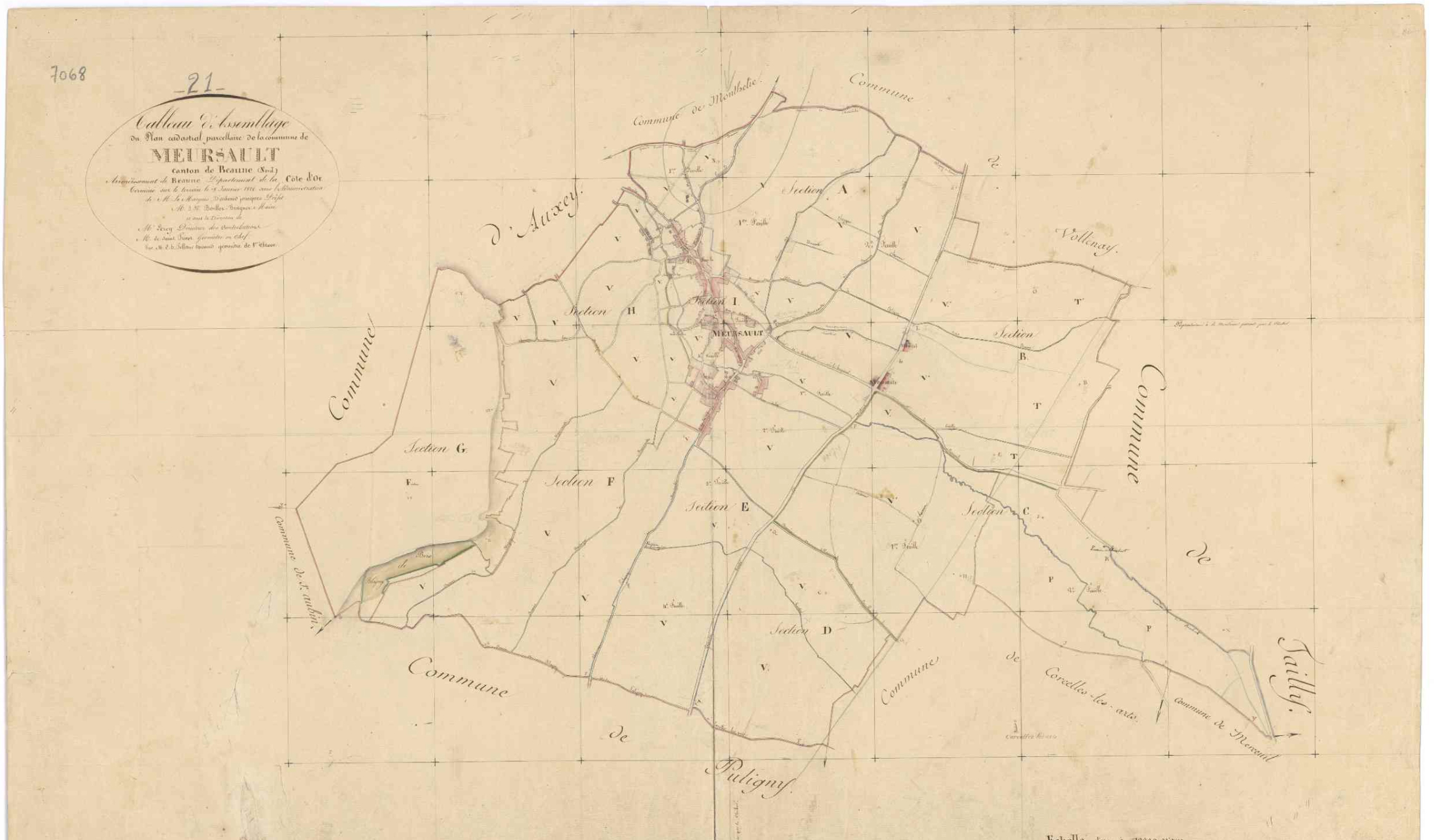
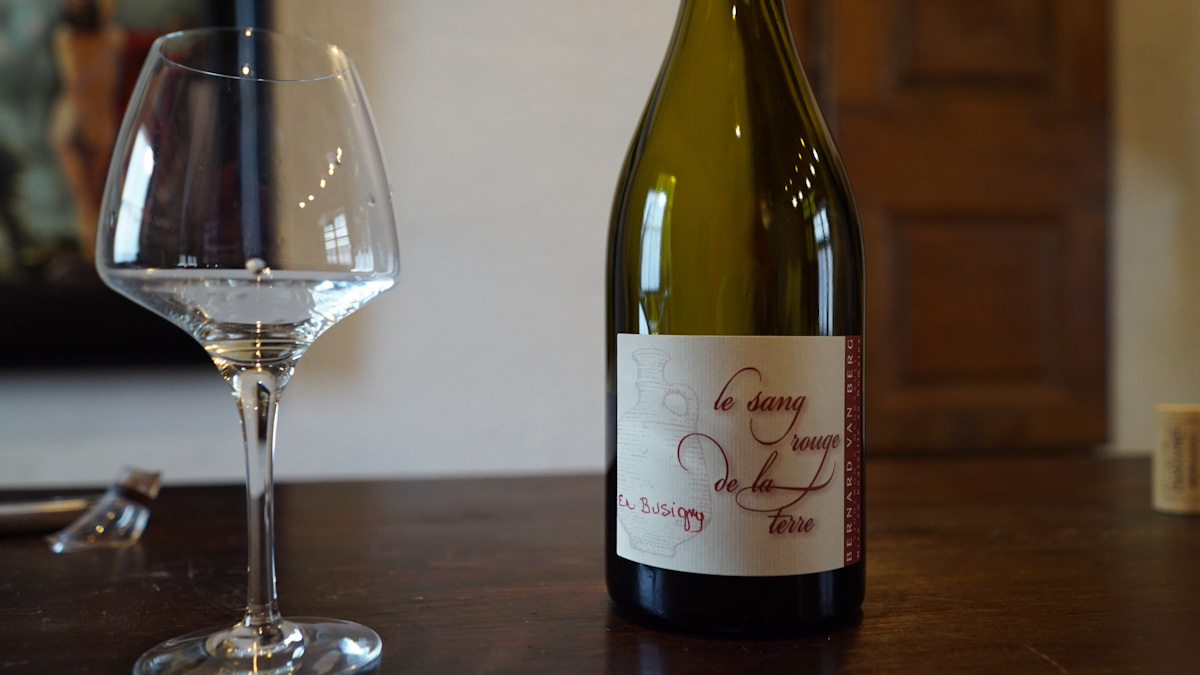
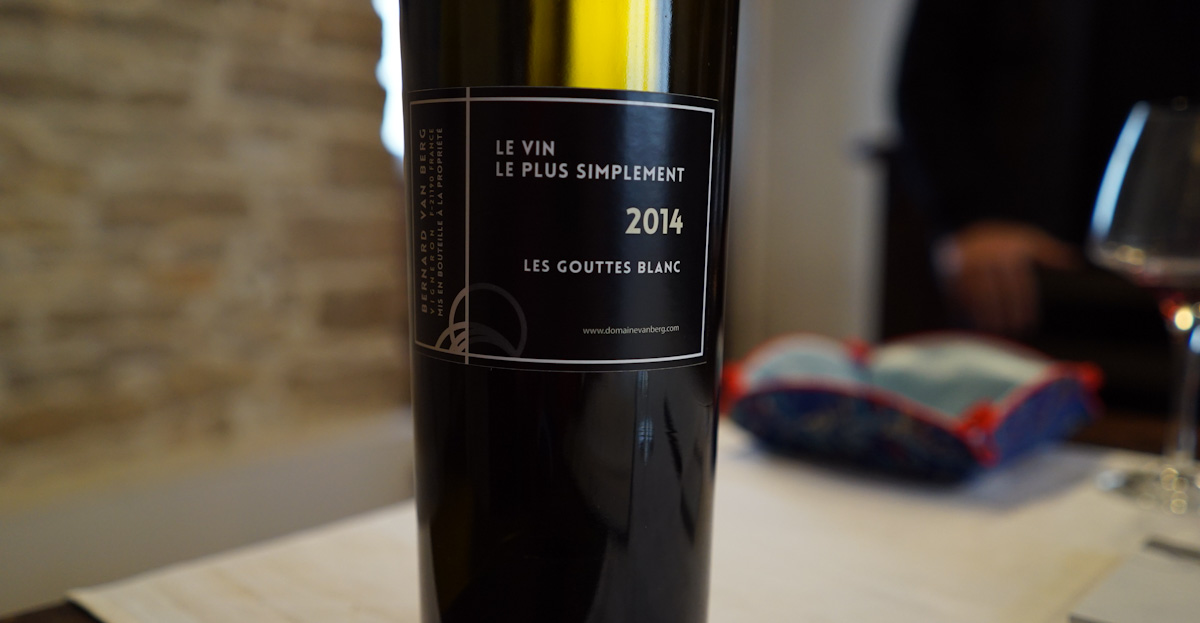
 - A true vin d’émotion – a Burgundy of passion
- A true vin d’émotion – a Burgundy of passion - A truly hedonistic wine – lively and enjoyable
- A truly hedonistic wine – lively and enjoyable - A vivacious wine for pure indulgance
- A vivacious wine for pure indulgance - A potential vin d´émotion - frais et léger
- A potential vin d´émotion - frais et léger
Re-reading this article, really interesting to see the work done by Van Berg. I remember you could get his wines in Brussels in 2007/8 for around 20/30 euros , I had a few bottles then.
Agree very interesting and very nice people the Van Bergs. I was there when they had sold the estate … a new vigneron is now making wine there … will visit this fall I hope.